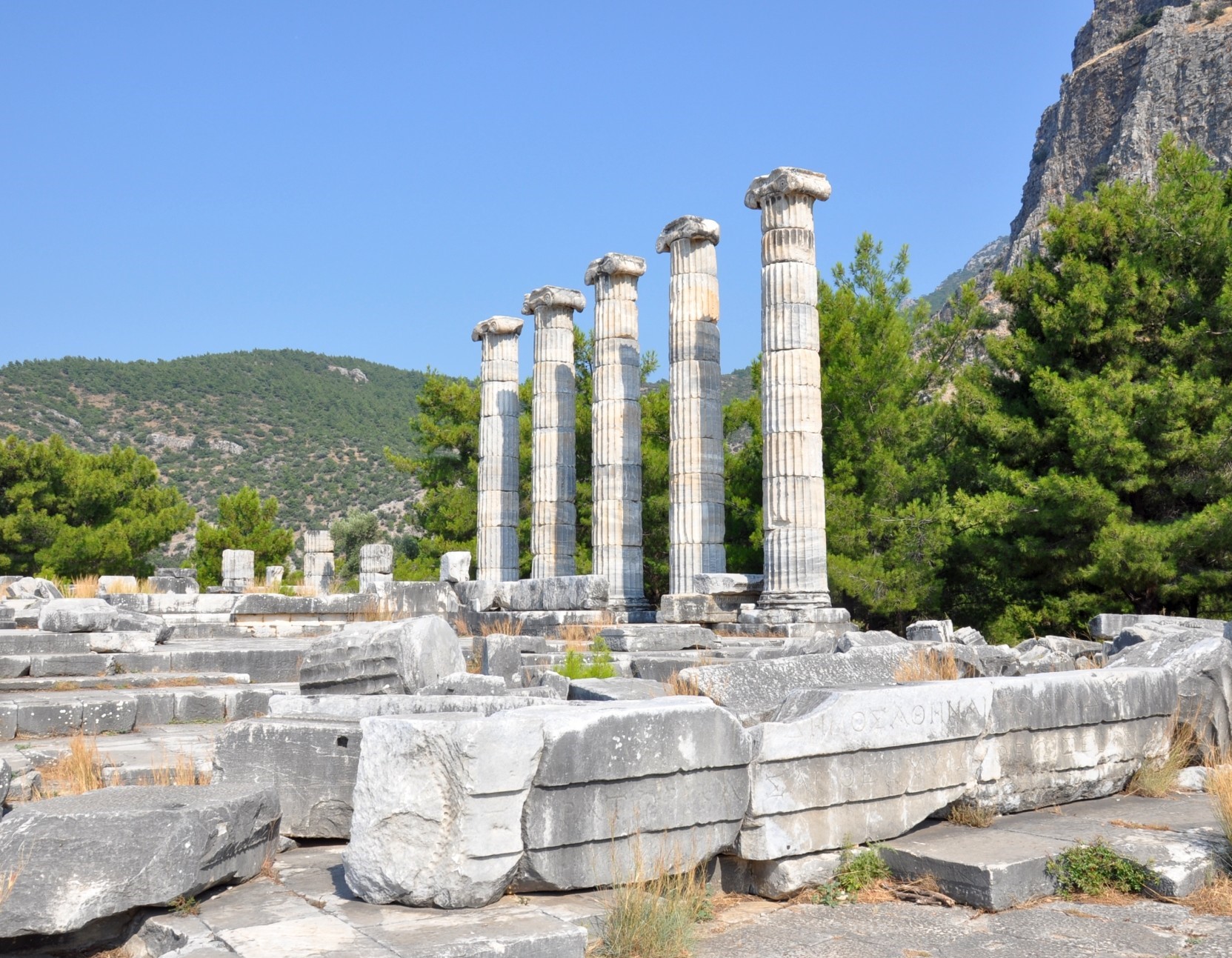The ancient city of Priene, located in the south of Ephesus, offers the magnificent features of a city dating back to the 4th century. The ancient city of Priene is located 15 kilometers southwest of the Söke district of Aydın, on the southern slopes of Samsun Mountain (Mykale). The first information about this city, which was included in the Ionian League, is found in ancient sources in the 7th century BC. The city was rebuilt in the middle of the 4th century BC on the basis of the plan named after Hippodamos of Miletus. Priene was an episcopal center during the Byzantine period. The city, which is gradually moving away from the sea due to the alluvium carried by the Menderes River, has lost its value over time. It is known that Priene was completely evacuated in the 13th century.
The fact that the city was built on a steep cliff offered an advantage in terms of defense. Priene is one of the best preserved examples of urban planning from Antiquity to the present day. In this respect, it is extremely important to comprehend the development of urban planning in Anatolia and to set an example for contemporary planning practices. Priene was designed by the famous city planner Hippodamos of Miletus and designed the city on a chessboard plan, with the streets of the Bosphorus intersecting each other at right angles. The main streets run in the east-west direction, and the secondary streets run in the north-south direction. As a whole city, it faces south. This arrangement allowed the Priene houses to receive sunlight in the winter months and the mouths to the roofs of the houses in the summer.
The plan of Hippodamos divided the city into insulas or islands. Each rectangle measures the area… He had either four houses or an official building. Some structures, such as the stadium and the theater, did not fit into the city plan due to their shape and/or size. In addition to urban planning, there are three monuments that visit Priene: The Priene theater is one of the best examples of Greek-type theaters. This horseshoe-shaped theater is built on the hillside and has a seating capacity of 5000 people. The theater has undergone renovations in different periods of history.
The Temple of Athena, located about 100 meters above sea level and the Menderes Valley, attracts the attention of visitors. Designed by architect Pytheos, who was also the architect of the Mausoleum in Halicarnassus, this Ionic temple became one of the most famous monuments in Ionia. After his temple in Priene, Pyteos published a book explaining the principles of Ionian architecture. The attributes for which he used this temple became the canonical orders of Ionic architecture.
In the center of the ancient city, there are many monumental buildings built by well-known architects of the period and skillfully integrated into the city plan. Among the prominent buildings of the city are the Temple of Demeter, the Temple of Athena, the agora, the Temple of Zeus, the bouleuterion, the upper gymnasion, the lower gymnasion, the Temple of the Egyptian Gods, the residence of Alexander the Great, the Byzantine church, and the necropolis area. The theater, another important structure of the city, was built in 350 BC and has a capacity of 5 thousand people. In addition to these, the houses of Priene, one of the best-preserved examples of its kind from the Late Classic and Hellenistic periods, provide valuable information about the settlement history. In this respect, the city is described as the “Pompeii of Anatolia”.
Buleterion
The third interesting building in Priene is its charming town hall with seating capacity of 640 people. Town hall where the members of the city council used to meet on the special days of the week was covered over with a wooden roof. The Buleterion is entered through two major doors.
